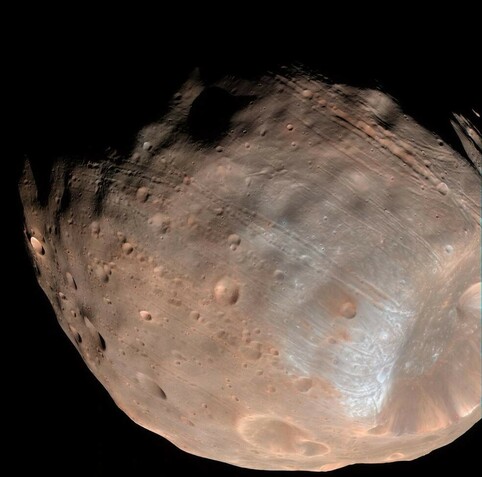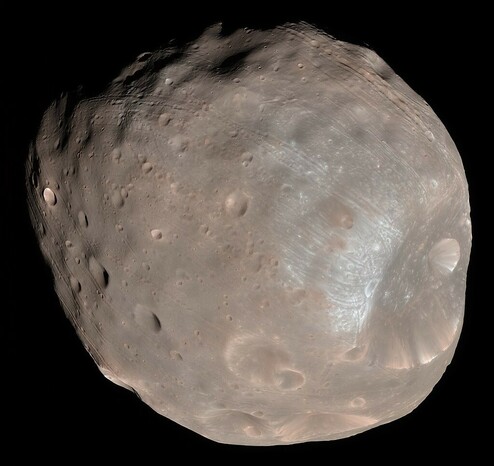Khurram Wadee ✅ · @mkwadee
1453 followers · 14042 posts · Server mastodon.org.uk#stickney #crater #astronomy #picture #apod #phobos
Reymond Aguinaldo · @mondinspace
424 followers · 1269 posts · Server mastodon.socialNew modeling indicates that the grooves on #Mars’ moon #Phobos could be produced by tidal forces—the mutual gravitational pull of the planet and the moon. Initially, scientists had thought the grooves were created by the massive impact that made #Stickney crater (lower right).
#SpaceMastodon #Spacedon #Space #Astronomy #Astrodon #ScienceMastodon #Sciencedon #Science #Moon #Moons #MarsMoon #MarsMoons
#mars #phobos #stickney #SpaceMastodon #spacedon #space #astronomy #Astrodon #sciencemastodon #sciencedon #science #moon #moons #marsmoon #marsmoons
Reymond Aguinaldo · @mondinspace
423 followers · 1268 posts · Server mastodon.socialImage of #Phobos from the #Mars #ReconnaissanceOrbiter with #Stickney crater on the right. Phobos is the larger of Mars' two moons and is 17 x 14 x 11 miles (27 by 22 by 18 kilometers) in diameter. It orbits Mars three times a day, and is so close to the planet's surface that in some locations on Mars it cannot always be seen.
#SpaceMastodon #Spacedon #Space #Astronomy #Astrodon #ScienceMastodon #Sciencedon #Science #Moon #Moons #MarsMoon #MarsMoons
#phobos #mars #reconnaissanceorbiter #stickney #SpaceMastodon #spacedon #space #astronomy #Astrodon #sciencemastodon #sciencedon #science #moon #moons #marsmoon #marsmoons



